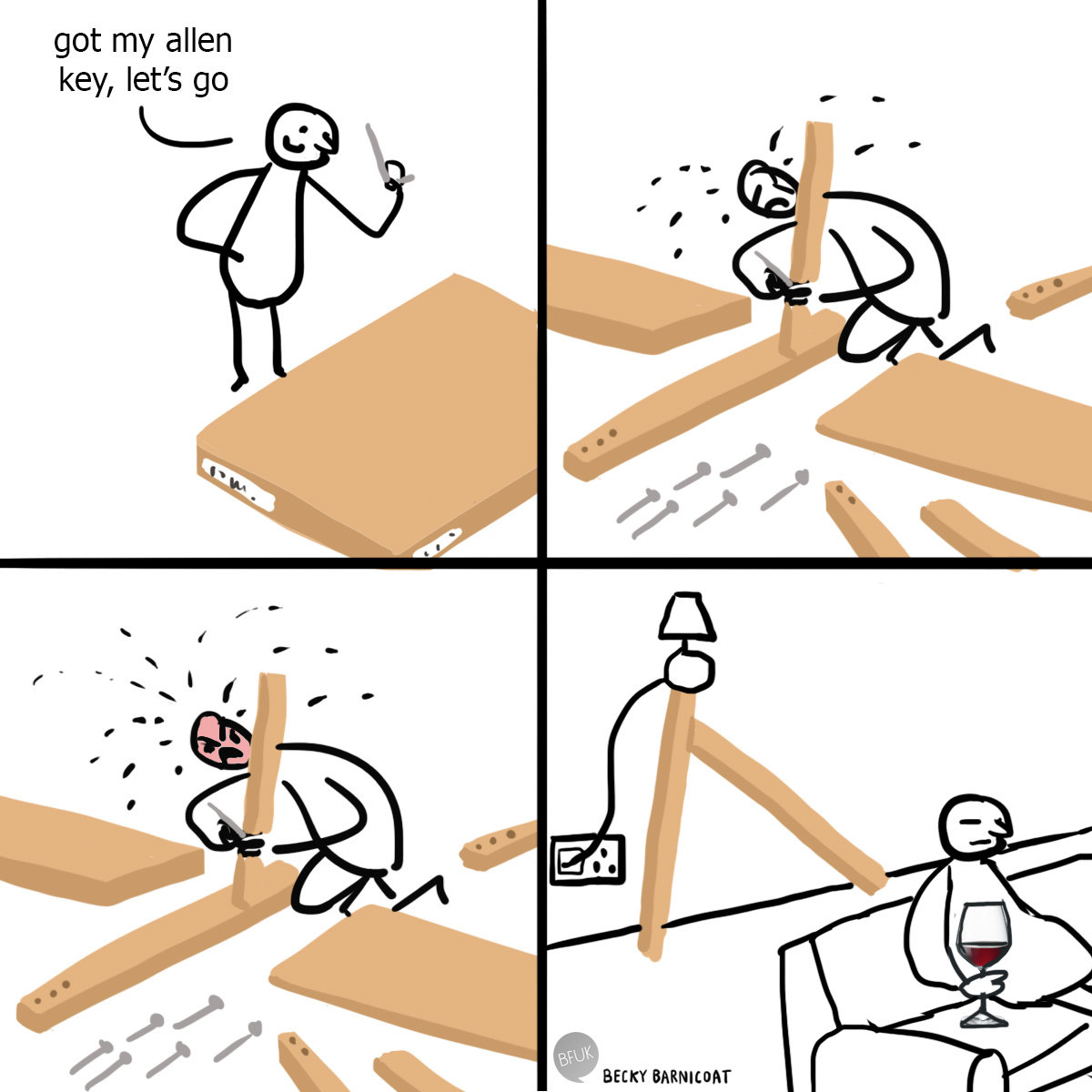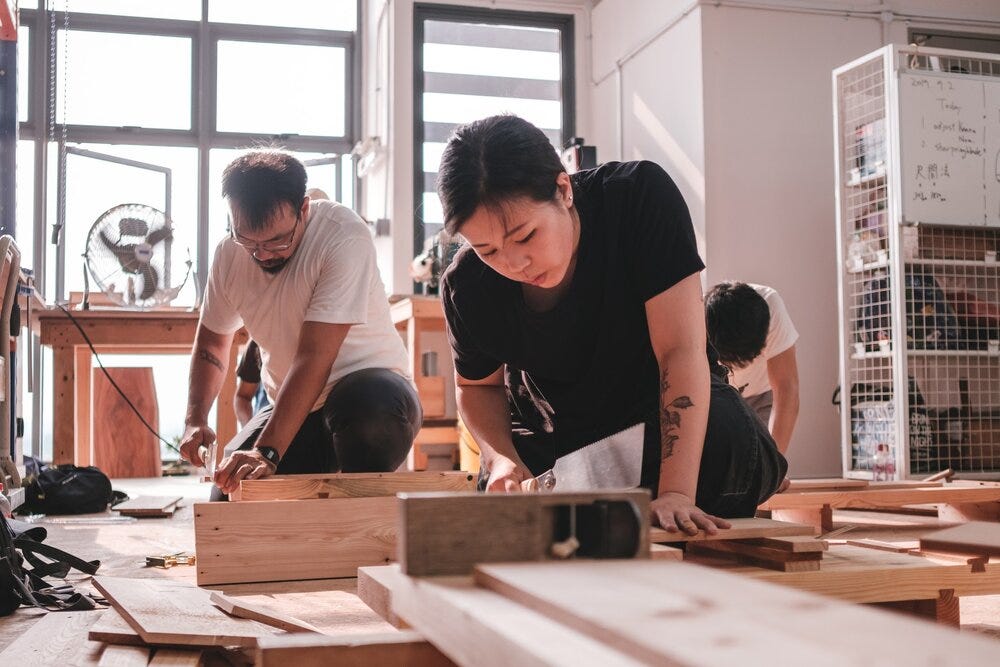Why IKEA’s Next Competitor Is Your Local Woodshop
The IKEA DIY era completed its viral cycle. Get ready for community workshops, a third place where people reject optimization and vote for pure creation
TLDR:
IKEA turned furniture buyers into assemblers, but the future belongs to creators.
With the global furniture market projected to hit $878 billion by 2032 and DIY furniture growing to $160.3 billion by 2029, people crave hands-on experiences and community.
A new model, built on memberships, workshops, raw materials, a marketplace, and franchise growth, will support local makers in crafting and selling unique pieces.
The company that nails this won’t just sell furniture.
It will help tribes create what they want.
From Boring Allens to a Community of Builders
IKEA’s plug-and-place model made sense for its time. Now, we spend all day on screens, scrolling, clicking and consuming. People don’t just want to put things together.
People crave a third place to build real stuff.
They want to create from scratch, to work with their hands, to build something uniquely theirs and be part of a community. This isn’t about nostalgia. They want to sweat for something in real life.
People want to feel pride looking at what they added to their living spaces. The next big opportunity isn’t another pre-cut DIY kit.
The new business model will remove another layer of convenience in exchange for deeper engagement.
Instead of just connecting pieces to see a product, people will cut, shape, and craft their own furniture, deepening their engagement with the process and developing hands-on skills along the way.
It’s a shift from IKEA’s “DIY fun” to “A Member of the City's Makers”.
The Business Model in Practice
IKEA succeeded because it turned a passive buyer into an active participant. The next iteration will push that even further, creating a business built around:
Membership & Subscription:
Monthly fees unlock workshops, materials, and templates. With 26% of US consumers aged 31-40 hooked on DIY, it’s like a gym for builders. Your gains are skills and creations.Workshops & Learning:
Local hubs offer expert-led sessions. With 1,400 maker spaces thriving in the US by 2016, these spots turn novices into pros.Raw Materials & Tools:
High-quality lumber and tools replace kits, tapping into a woodworking tools market doubling to $10 billion by 2028 and DIY lumber sales hitting $154.2 billion by 2027.Marketplace & Monetization:
Members sell their work, riding a customized furniture market that will grow to $87.7 billion by 2032. Etsy’s $4 billion in small-business income in 2020 proves the demand.Franchise Expansion:
Certified locals launch hubs with a playbook and revenue-sharing, scaling fast without heavy overhead.
Take The Maker Bean in Toronto. A café-maker space hybrid that’s growing. Add a marketplace and memberships, and you’ve got a winner.
Lessons from IKEA Applied to the Future
Keep logistics simple:
Like IKEA’s flat-pack shipping, streamline material sourcing. Partner with local lumberyards or use bulk-buying co-ops to keep costs low and quality high.Engage the customer:
IKEA hooked us with involvement; this model makes us creators. The difference? You’re not following instructions. You’re writing them.Build a community:
With the maker movement booming, local hubs are vital. People want to belong, not just buy. Host build-offs, showcase nights, or skill swaps to turn members into a tribe.Enable scalable growth:
Franchising will enable rapid expansion without a bloated core team. Offer turnkey playbooks, from sourcing to staffing, so franchisees can focus on community, not logistics.
Unlike IKEA’s global uniformity, this model thrives on local flavor, each hub as unique as its creators. It’s a fresh take that stands out in the DIY and furniture space.
Why You Should Care
You’re here because you want to know what’s next, how the smartest ideas turn into the biggest wins. This is one of those ideas.
People want to create, connect and feel proud. Not online but face-to-face.
Value Frame is a newsletter breaking down the strategies and growth hacks that built the world's greatest companies to help you understand what worked and build what's next.








Thanks George. I hope the concept is strong enough to get people rethink their approach in similar businesses.
I don't know about the company that will implement such a model, but you have nailed the concept! Spot on 👌